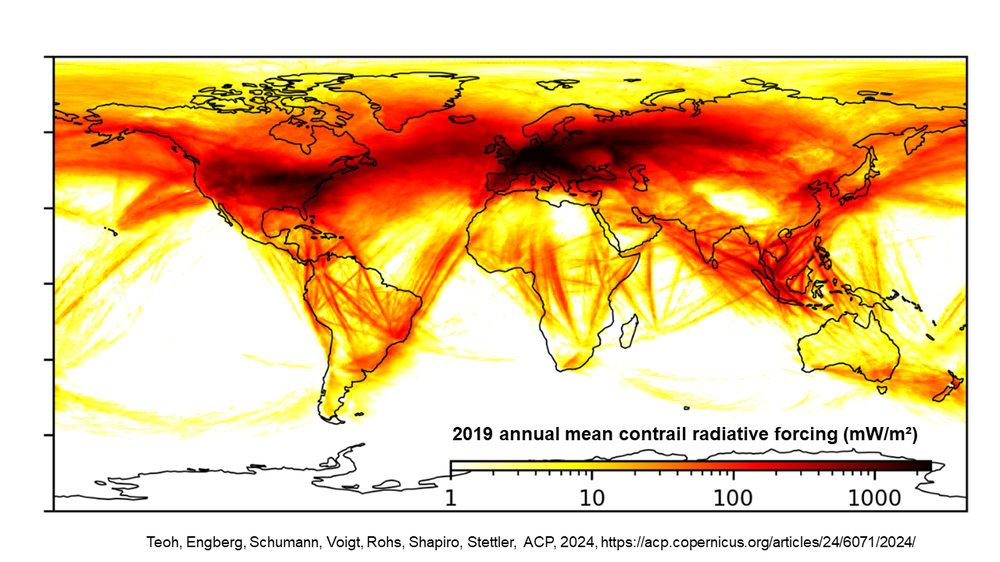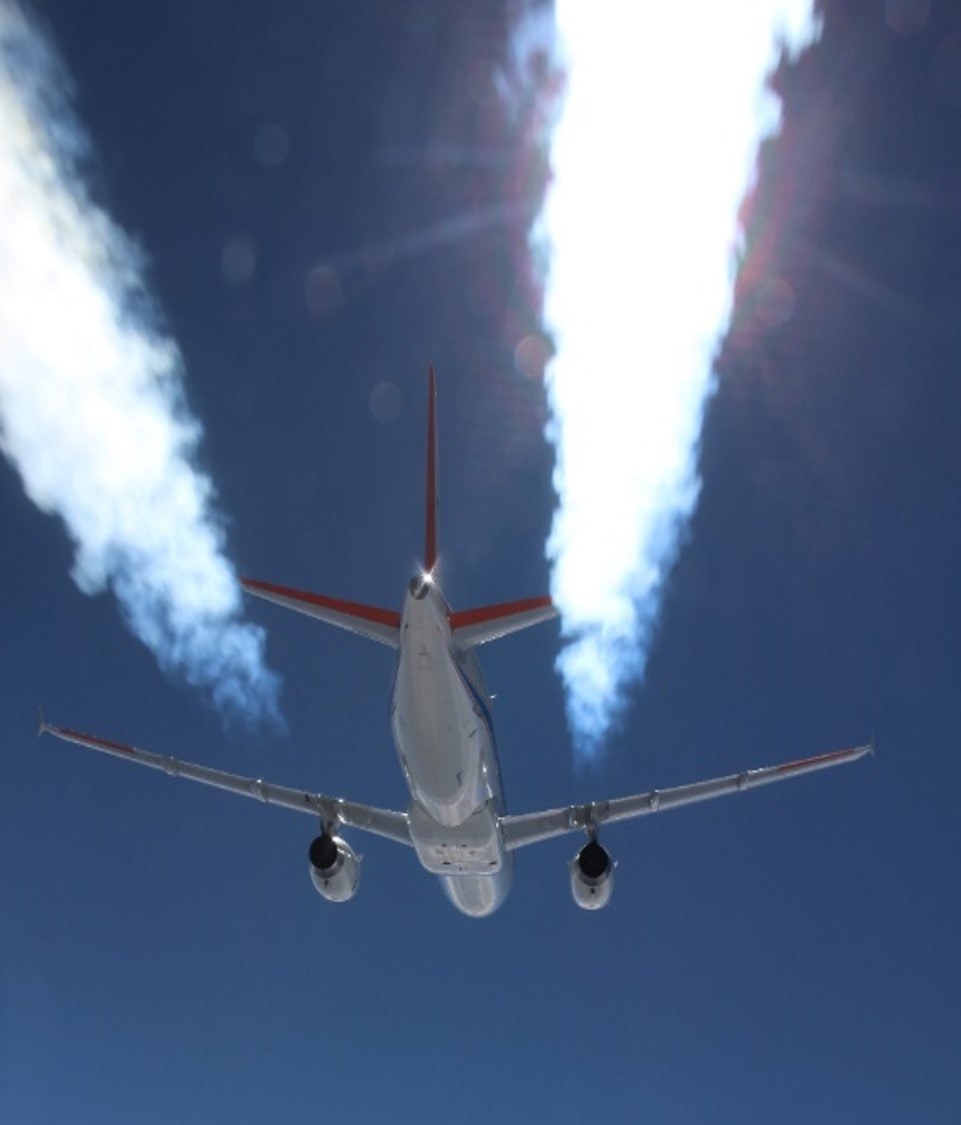Analysis tool supports contrail mitigation as anti-warming strategy

Mint_Images/Envato Elements

Teoh et al., ACP, 2025 https://acp.copernicus.org/articles/24/6071/2024/
Like road and maritime transport, air travel produces carbon dioxide (CO2) emissions that contribute to global warming. When it comes to aviation, however, there are also short-lived, 'non-carbon dioxide' climate warming effects – primarily due to the formation of condensation trails (contrails) and the emission of nitrogen oxide compounds (NOx). This associated warming is considerable: estimates show that, over periods of a few years, the energy added to the atmosphere by aviation’s non-carbon dioxide effects is comparable to the accumulated carbon dioxide effect from the entire era of commercial flight since the 1940s.
Important research into climate-compatible aviation often examines how we can reduce carbon dioxide emissions from aircraft. Yet less attention has been devoted to the reduction of non-CO2 impacts. There are multiple reasons for the slower pace of progress in this area, including the complex processes leading to the formation of contrails as well as the various timescales of the individual impacts. Carbon dioxide remains in the atmosphere for centuries as it cycles between the atmosphere, oceans and continents, being gradually removed from the atmosphere over centuries. In contrast, the nitrogen oxide-induced increase in ozone and reduction in methane (both of which affect the climate) take place over timescales of months to decades. Contrails, in turn, exist for only a few hours at cruising altitude. This extremely wide range of timescales complicates efforts to compare the CO2 and non-CO2 effects of aviation emissions and assess mitigation strategies.

A central question is whether specific mitigation measures that have both positive and negative effects on the climate yield, overall, a net climate benefit. For instance: is it generally beneficial for the climate to reduce contrails or nitrogen oxide emissions if, at the same time, the same measure increases carbon dioxide emissions? The 2 July 2025 issue of the science and technology journal Nature features a paper by a US research group (Prather et al.) that looks at this very question.
Christiane Voigt from the Institute of Atmospheric Physics at the German Aerospace Center (Deutsches Zentrum für Luft- und Raumfahrt; DLR) comments on the results:
"These new findings drive the field forward. The authors of the study, Prather et al., introduce a risk-based trade-off assessment – a type of decision-making process common in other sectors – that explicitly incorporates uncertainties. More specifically, their method determines the probability that a mitigation measure with both positive and negative climate effects will, on balance, have a positive net result. This makes it possible, for example, to estimate more precisely the extent to which flight routes with slightly higher fuel consumption at lower altitudes are worthwhile to avoid climate-warming contrails. This risk assessment is a valuable tool for advancing strategies to curb aviation’s non-carbon-dioxide effects."
Optimising flight paths to protect the climate
Aircraft generally follow flight paths designed for cost or fuel efficiency. Diverging from such paths to prevent contrails, for example by adjusting the altitude, can lead to a slight deviation from optimal flight performance and consequently to an increase in carbon dioxide emissions. In the recent paper, a statistical analysis of 85,000 flight paths optimised for contrail avoidance shows that the climate impact of contrails can be reduced by 73 percent – with an increase in carbon dioxide emissions of less than one percent. Moreover, Prather et al. calculate a very high probability of success for their reduction strategy, with more than 99 percent probability of a positive net climate effect. That said, the operational feasibility of preventing contrails has yet to be proven in real-world tests. Areas with an increased prevalence of contrails, such as in Europe, North America and along transatlantic routes between the two continents, offer ideal conditions for trialling this new method. More research is needed to further limit the uncertainties surrounding contrail and nitrogen oxide effects, for example by improving weather and contrail forecast models.
